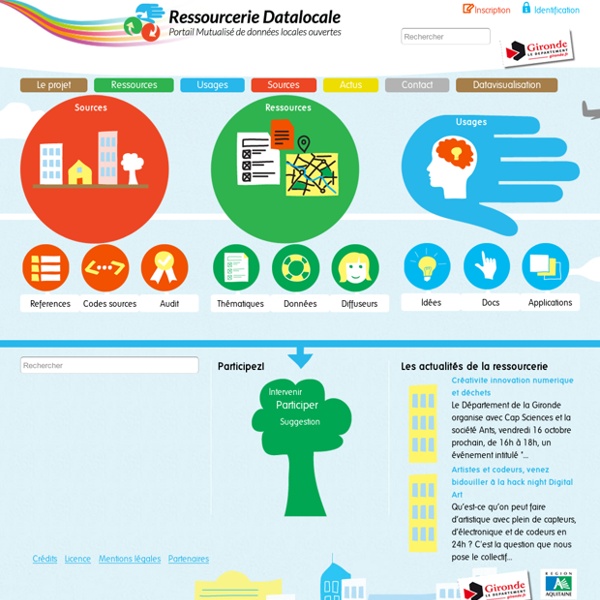



Free mapping data will elevate flood risk knowledge For the past 17 years we have been capturing LIDAR (Light Detection & Ranging) data in England. LIDAR uses a laser to scan and map the landscape from above and is widely considered to be the best method for collecting very dense and accurate elevation data across the landscape. We use LIDAR to help the work of the Environment Agency in many ways, including creating flood models, assessing coastal change and analysing how land is used. We now have an extensive archive of aerial LIDAR data covering nearly three quarters (72%) of England – the data mainly covers flood plains, coastal zones and urban areas. As technology has improved and costs have fallen, LIDAR data is now being used by just about everybody who works with maps.
OpenData Nantes Blog du projet open data du Département de Loire-Atlantique Devinette : qu’ont donc en commun des territoires tels que Rennes, Paris, Nantes, le département de Loire-Atlantique, de Saône-et-Loire, etc… ? Ils ont tous ouverts ou s’apprêtent à ouvrir les données publiques… Au public ! En somme, ils se sont lancés ou se lancent tout juste dans la grande aventure qu’est « l’Open Data ». Communauté urbaine de Bordeaux Map of scientific collaboration (Redux!) Several years ago, I created a map of scientific collaborations. The attention this map obtained surpassed my wildest expectations; it got published in the scientific and popular press all around the world! I had mainly forgotten about it until I received an email that rekindled my interest in this visualization and I thought it was high time to revisit this visualization. Unfortunately, scientific papers (and associated data) are closely guarded and only a handful of firms have full access to them. I now work in a very different field, so I lost access to this dataset. But while perusing my Twitter feed, I came across the very active feed of Scimago Lab.
Population Lines Print I recently produced a map entitled “Population Lines”, which shows population density by latitude. The aim was to achieve a simple and fresh perspective on these well-known data. I have labelled a few key cities for orientation purposes but I’ve left off most of the conventional cartographical adornments. 8 tools for visualizing data with open source Data visualization is the mechanism of taking tabular or spatial data and conveying it in a human-friendly and visual way. There are several open source tools that can help you create useful, informative graphs. In this post we will take a look at eight open source, data visualization tools.
Transforming Data into Visualization Data visualization explains a story to the user; a story that if told well should help the viewer discern information and relationships between the data. Data visualization, for a designer, is the process of taking a complex structure and breaking it down in a way that the reader can easily comprehend. It is a powerful tool used to translate complex data into accessible insights. In this article, I’ll explain the four critical steps we took to create a visualization graph for the World Economic Forum (WEF). Step 1: Decipher the Data The first step in any data visualization process begins with unpacking all of the elements and establishing the goal of the visualization or infographic.
Data visualization: Science on the map Illustration by the Project Twins When linguist Lauren Gawne roams the valleys of Nepal documenting endangered Tibetan languages, she takes pains to distinguish each dialect's geographical origin. But when it came to producing maps of her results, for many years her cartographic methods were somewhat crude. “My old maps were [made] using MS Paint on top of some copyrighted map that I really shouldn't have been using,” she says.